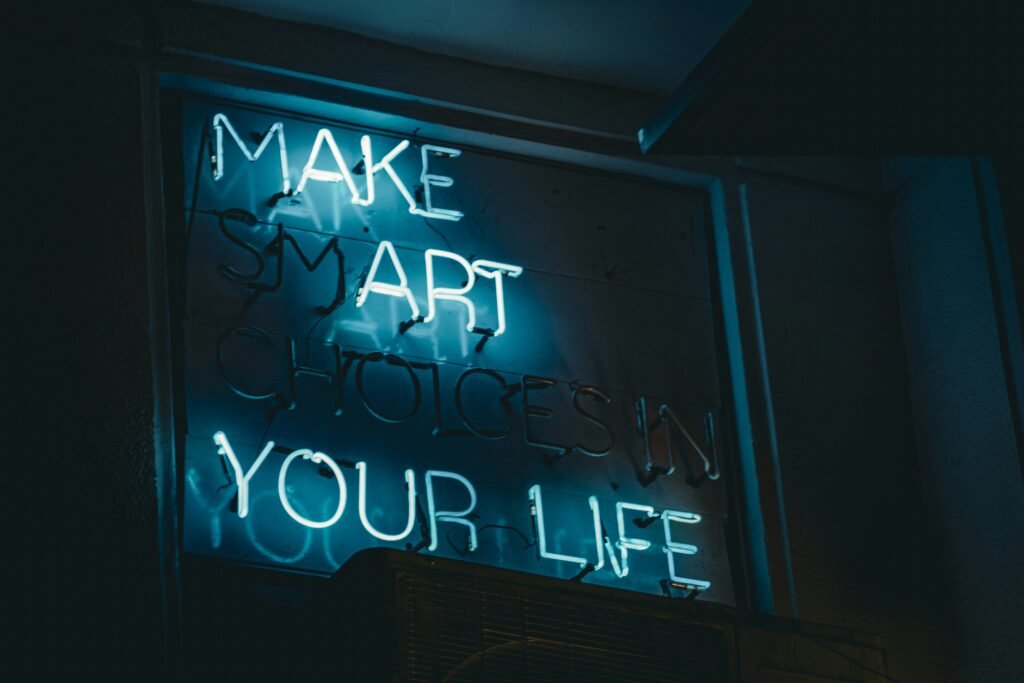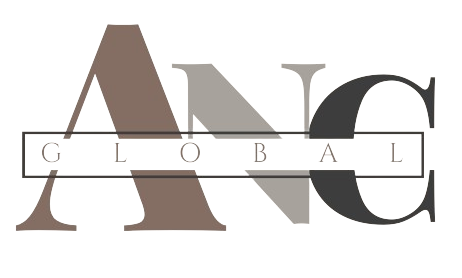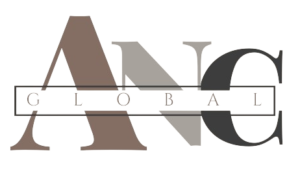Is AI Killing Creativity in your employees?
A pressing question in boardrooms, classrooms, and creative studios echoes louder than ever: Is AI killing creativity? As artificial intelligence becomes embedded in everything from marketing campaigns to movie scripts, concerns about originality, imagination, and human innovation are mounting. Are we on the brink of a creative renaissance powered by machines—or a slow erosion of what makes human thought unique?
At ANC Global, we’ve witnessed firsthand how digital transformation and AI adoption can shape organizational behavior, leadership styles, and even the fabric of employee value proposition (EVP) strategies. But creativity isn’t just a soft skill—it’s the heartbeat of innovation. And it may well be under threat.
The Rise of AI in Creative Fields

Generative AI tools like ChatGPT, Midjourney, and DALL·E are revolutionising the way we write, design, and ideate. Marketers use AI to draft blog posts in seconds. Designers prompt images without lifting a pencil. Even Hollywood is toying with AI-generated scripts and trailers.
But while AI enhances speed and efficiency, it often mimics what already exists. It’s trained on massive datasets, meaning it recycles what it has seen before. True creativity, by contrast, often stems from discomfort, ambiguity, and even failure—traits that algorithms struggle to replicate.
“AI is great at pattern recognition. Creativity often lies in pattern disruption.”
— Creative technologist, Wired Magazine [source]
What Are MENA Leaders Saying?
In our recent State of Sales Leadership 2025 report, sales and marketing heads in the MENA region voiced concerns over AI burnout, lack of human originality, and pressure to “automate creativity.” One Saudi CMO shared how her team now edits AI outputs more than they create from scratch, describing it as “innovation on autopilot.”
Similarly, HR leaders are rethinking how to embed creativity into leadership development programs like our Leaders to Follow or Coaching for Innovators to ensure originality remains a human trait—not a prompt-based function.
Is AI Actually Enhancing Creativity?
Despite growing concerns that artificial intelligence may dull the human creative edge, there’s mounting evidence that AI is enhancing, not erasing, creativity—especially when integrated thoughtfully into the creative process.
The Shift from Automation to Augmentation
AI tools are evolving from mere automation assistants to collaborative partners in ideation. Platforms like DALL·E, ChatGPT, and RunwayML enable creators to quickly visualize concepts, refine drafts, and explore previously unreachable ideas.
Rather than replacing creative professionals, these tools are helping them skip the mundane, freeing up cognitive space for storytelling, conceptual development, and innovation.
According to McKinsey’s 2024 Future of Work report, organizations that leverage AI in their creative teams report a 25–30% increase in strategic creative output.
How AI Amplifies Human Imagination
AI helps creators do more than they could alone. It supports rapid iteration, unlocks divergent thinking, and accelerates the prototyping process.
Real-World Example: Hospitality Sector Transformation
At ANC Global, our project with a Saudi-based hospitality group used AI-driven HR tools to handle job matching, performance reports, and resume parsing. This freed up their internal HR team to focus on branding, innovation, and onboarding experiences, unlocking new creative energy within the team.
→ Read about our Employer Branding & EVP Design support.
Creative Gains in the Marketing & Media Space
Case Study: Design-Led Innovation in Egypt
We partnered with a creative agency in Cairo to embed AI tools like Midjourney and Copy.ai into their design process. After running AI x Human brainstorming sprints, their team reported a 30% drop in development time and stronger client satisfaction scores.
→ Learn how we help teams become Fit-for-Future Organizations.
Inclusion, Accessibility & Creative Expression
AI’s impact on inclusive creativity is especially visible in neurodiverse teams. For employees with ADHD, dyslexia, or autism, tools like text summarizers, voice-to-text generators, and visual organisers are bridging communication gaps and unlocking latent potential.
→ Explore our Neurodiversity Coaching Program for inclusive innovation strategies.
Human + AI: A New Creative Relationship
The most forward-thinking companies are embracing AI not as a replacement, but as a creative co-pilot. As Harvard Business Review put it:
“AI is best at divergence. Humans are best at convergence. The magic happens when both collaborate.”

What Are the Risks of Over-Automation in Creative Work?
While AI has opened new frontiers for innovation, there’s growing concern that over-reliance on automated tools could dilute originality and critical thinking in the creative process.
The Homogenization Trap
One of the most cited challenges is the risk of sameness. Many AI models are trained on similar data pools, leading to recycled aesthetics and ideas. Whether you’re generating AI-written blogs, art, or music, there’s a chance that the outputs begin to lack novelty.
External Insight:
A 2025 study published by the Oxford Internet Institute found that content produced by generative AI tools across five industries shared over 40% semantic similarity, raising alarms about algorithm-induced conformity in the creative sector.
Skill Atrophy: Are We Losing Our Edge?
When AI handles too much of the creative workflow, humans may lose their craftsmanship. For instance, if designers rely solely on AI for layouts, their foundational design intuition might weaken. This is especially risky for early-career professionals who haven’t yet built a strong creative muscle.
→ At ANC Global, we address this concern in our Leadership Capability Building programs by helping leaders strike the right balance between innovation and skill development.
The Illusion of Personalization
AI promises personalization, but often delivers mass-produced content dressed up with minor tweaks. The result? Brand messages that may feel generic or misaligned with nuanced customer segments, especially in industries like luxury, healthcare, or education.
Case in Point: The GCC Luxury Market
In a recent consulting engagement, ANC Global worked with a UAE-based fashion brand struggling with AI-driven campaign fatigue. While their AI tools optimized email and social content, engagement plummeted. The brand’s audience, which valued cultural sensitivity and uniqueness, felt the messages were tone-deaf.
→ Discover how our Culture Mapping & EVP Strategy reversed this trend.
Ethical Concerns and Data Biases
AI doesn’t create in a vacuum—it builds on existing data, which may be biased, outdated, or incomplete. Creative outputs that inadvertently reinforce stereotypes or ignore marginalized voices can damage brand equity and employee trust.
→ This is why ANC Global integrates Inclusive Leadership Training in all innovation-driven projects.
Organizational Development in the Age of AI
AI is also influencing how organizations are designed for innovation. Businesses that rely too heavily on automation risk reducing innovation to a formula. Our Fit-for-Purpose Organization Design and 3F0 Model help restructure teams to include AI as a support function—not the creative lead.
For companies in the tech and startup space, this means redefining job descriptions, reskilling mid-managers, and nurturing neurodiverse teams who can think in nonlinear ways—often an antidote to algorithmic thinking. (Explore our Neurodiversity Inclusion Solutions to see how this approach enhances originality.)
Real-World Examples: Where AI Falls Short
Despite AI’s promise, there are countless examples where it stifles originality or produces bland, generic outputs.
Take advertising, for instance. When brands overly rely on generative AI tools, their content often lacks emotional depth and cultural nuance. A regional telecom provider in the UAE recently faced backlash after releasing an AI-generated Ramadan campaign that felt tone-deaf—because the AI failed to interpret the cultural context and spiritual sensitivity of the region.
In product design, companies using AI to generate prototypes often realize that their innovations look suspiciously similar to competitor products. Why? Because AI relies on existing datasets. As a result, businesses may unintentionally lose their brand distinctiveness.
At ANC Global, we work with organizations across sectors—including hospitality, aviation, and manufacturing—to ensure that AI adoption doesn’t dilute human-centric design and creative leadership. In one engagement with a fast-growing FMCG firm in Egypt, we helped embed innovation KPIs into performance reviews while simultaneously coaching team leads to challenge AI outputs, not just accept them.
Learn more about our Performance Management Services and how they link creativity to measurable KPIs.
The Human-Centered Creativity Framework
To futureproof your organization against AI-induced creative fatigue, we recommend adopting a Human-Centred Creativity Framework, built on four pillars:
Curiosity over Compliance
Encourage teams to question and critique AI-generated outputs. Foster a “Why not?” culture.Capability Development
Use programs like ANC Global’s Leaders to Follow and Coaching to sharpen creative judgment—not just technical proficiency.Inclusive Collaboration
Build neurodiverse teams who offer alternative ways of thinking. Creativity often emerges at the intersection of difference. See how our Neurodiversity Audits drive this change.Purpose-Driven Design
Embed creativity into your EVP and culture. Your employees should know that innovation is a behavior, not a department.
Explore our Organizational Culture Design service to learn how purpose fuels originality.
Balancing Machine Speed with Human Insight
AI is incredibly powerful—but without human oversight, it’s like handing your company brandbook to a photocopier. Speed and volume don’t equal vision.
The most innovative companies in late 2025 are not those who automate creativity—they’re the ones who build systems that protect and promote it. These organizations treat AI as an amplifier, not a replacement. They integrate AI thoughtfully into their future-of-work strategies while ensuring human values remain central.
Final Thoughts: Is AI Killing Creativity?

The short answer: Only if we let it.
AI can mimic but rarely invent. It can iterate, but not intuit. The future of creativity will depend not on how advanced our algorithms become—but how committed we are to nurturing curiosity, risk-taking, and imagination within our people.
At ANC Global, we work with leaders across the MENA region and beyond to ensure technology enhances—not replaces—human ingenuity. Whether you’re redesigning your EVP, recalibrating performance systems, or building a neurodiverse innovation hub, our solutions are built to help you lead with originality in an age of automation.
Get Started Today
Are you ready to unlock your business’s full potential? Let ANC Global be your trusted HR partner. Our innovative, practical, and sustainable HR solutions are designed to help you overcome challenges and achieve your goals.
Contact us today to learn more about how we can help your business thrive: Get in Touch.
Explore More from Our Services
Explore More from Our Insights
- Imposter Syndrome: Why Women in Startups Might Hold Back
- Pay Parity and Its Effects on the Global Economic Crisis
- Why Middle Managers Make or Break Organizations
- Unseen Struggles: How Microaggressions Shape Workplace Experience
- Harnessing Collective Intelligence for Transformational Change
- Adaptive Leadership: Navigating a Dynamic Symphony
- Saudi Arabia Surges Ahead in MENA Venture Capital
Table of Contents
Reach Our Global Consultants
- Employee Disengagement: Your Fault or the General Environment’s?
- How to Develop a Strategic Workforce Plan: A Guide for HR Directors
- How Your Head of HR Helps the CEO Win: The Strategic Edge No One Talks About
- Is AI Killing Creativity in your employees?
- Top 3 Issues on the Minds of MENA Board Directors in 2025
